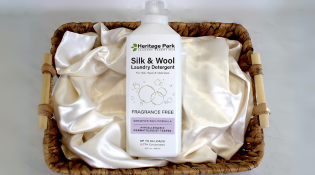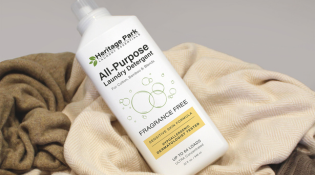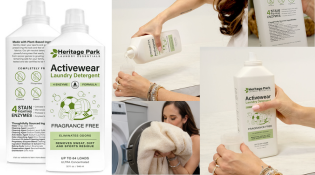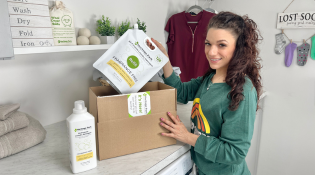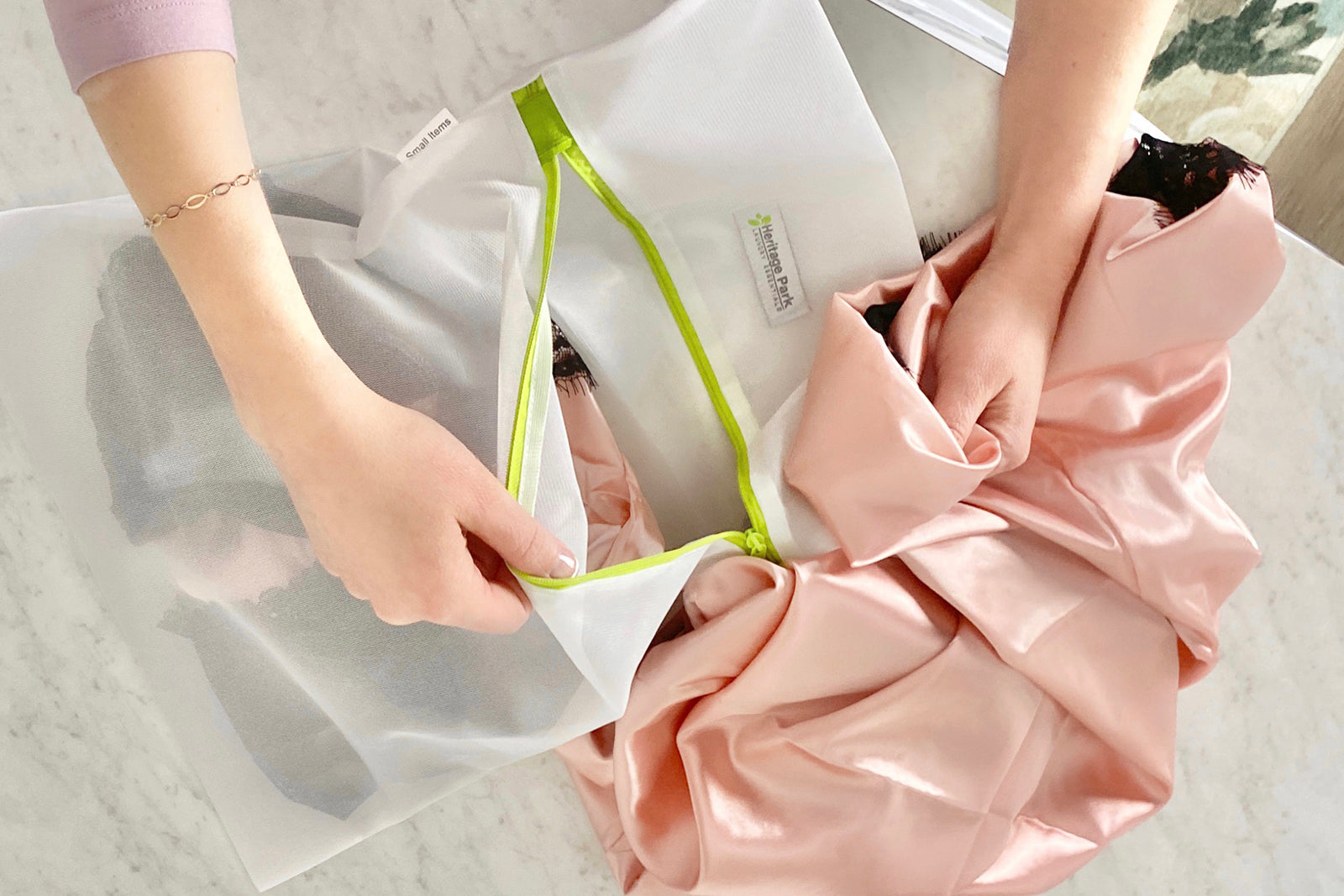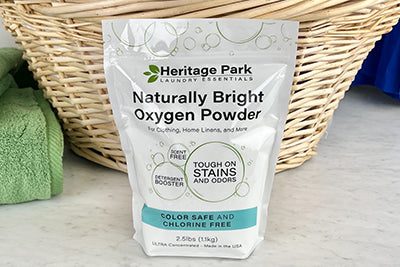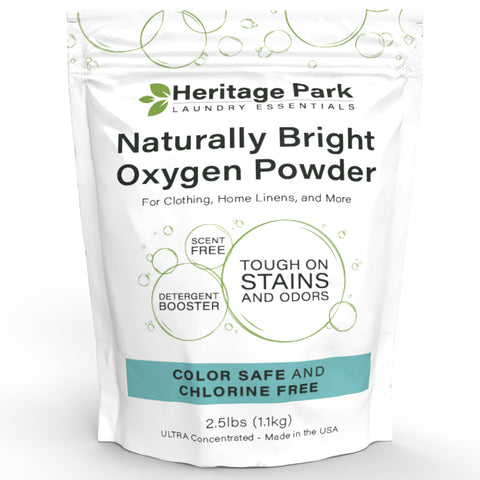This article from Heritage Park explains how our team cleaned up mud-caked jeans–one of the biggest messes we’ve encountered – using our All-Purpose Laundry Detergent with enzymes and Naturally Bright Oxygen Powder.
Inside this Article:
- Making the Most of Messes
- The Very, Very Muddy Jeans
- How We Cleaned the Mud-Covered Jeans
- Step One: Lay them on the floor of the garage
- Step Two: Hang outside to dry in the sun
- Step Three: Brush them with a stiff bristle brush
- Step Four: Head to the laundromat
- Step Five: Wash in Heritage Park All-Purpose Laundry Detergent with two scoops of Naturally Bright Oxygen Powder
- Step Six: Admire a job well done
- The Takeaway: What We Learned About How to Clean Muddy Jeans
Some days, the Heritage Park offices get downright messy. After all, if we’re telling our clients to use our detergent products on tough stains, we’d best have treated those stains ourselves. Walk in and you might find us dumping wine on a silk blouse; smearing lipstick and eyeliner into an Egyptian cotton pillowcase; or grinding BBQ sauce and mustard into an ex-boyfriend’s Nickelback concert tee (sorry, not sorry). It’s all in the name of science, and we are here for the experiments.
Making the Most of Messes
Every so often, we really luck out: life presents us with an organically occurring, delightfully sloppy mess. This gives us the chance to test our detergents under real-world conditions. Naturally, we were giddy with delight when one of our team members got this text from her son, an environmental scientist.
“I’m coming in the house, but I want to warn you I was on a job site and sunk into the mud. I went almost up to my thighs. My jeans are covered.”
Now, he’s a young adult (or as we like to say, “adult”) and should be able to handle washing his own jeans. But this was an epic mud stain, and we were super grateful for the heads-up.
The Very, Very Muddy Jeans

Suffice it to say, the jeans did NOT make it inside the house that day. But they were also spared the trash. We are laundry pros, and this kind of tough stain is pretty much our Mt. Everest. Call us crazy, but we were ready to make the climb.
Let’s do this 💪!
How We Cleaned the Mud-Covered Jeans
Here are the steps we took to get the jeans clean:
Step One: Lay them on the floor of the garage
Refer back to the part about NOT coming into the house. It was a rainy stretch of days (the very reason he sank so deep into that mud) so drying the pants outside wasn’t an immediate option. We laid them on brown bags and waited for the weather to break.
Step Two: Hang outside to dry in the sun
We did this for two days. This may have “baked” the mud into the fabric a bit, but it got the jeans completely dry. (We had considered aggressively spraying them down with a hose, but went with the sun drying method since the volume of dirt was just too big).
Step Three: Brush them with a stiff bristle brush
Not going to lie, this was a dusty job. But attacking them with a hard brush (the kind we use to scrub our lawn furniture) allowed us to get a LOT of the dried mud out. And, the brushing didn’t harm the denim jeans at all. In fact, it probably softened it up the jean material nicely (win!).
Step Four: Head to the laundromat
Not a chance we were going to put these in our washing machine at home. Even after stiff brushing, this kind of dirt requires an industrial-sized large-capacity, front-loading machine (the big one that uses up all your spare quarters). We used a heavy duty cycle, warm water, and an extra rinse (muddy clothes, y’all).
Step Five: Wash in Heritage Park All-Purpose Laundry Detergent with two scoops of Naturally Bright Oxygen Powder
This is truly where the magic happened. Here’s why:
Heritage Park All-Purpose Laundry Detergent contains a powerful blend of enzymes that work to break down and remove dirt, spills, and stains–including protein-based stains like grass and mud–without the use of harsh chemicals. At the same time, our detergent is made with natural and naturally derived ingredients that are safe for clothes, fine linen, and your skin. The concentrated, pH-neutral, liquid detergent formula contains no dyes, sulfates, phosphates, optical brighteners, chlorine bleach, or caustic chemicals.
Our Naturally Bright Oxygen Powder (also free from harsh chemicals, bleach, and brighteners) is an eco-friendly way to boost the cleaning power of your detergent. The active ingredient of sodium percarbonate releases oxygen molecules in water to naturally lift out stains and dirt from fabric. It also makes a great presoak or pre-treatment for stains (something we would have done with the jeans in a bucket if it had been a bit warmer outside).
Step Six: Admire a job well done
Yup, pretty impressive if we do say so ourselves. 🙌

The Takeaway: What We Learned About How to Clean Muddy Jeans
In truth, cleaning these jeans was probably one of our signature stain removal accomplishments. Here are a few of the lessons we learned along the way:
- Fresh stains are easier to treat than old stains, so take action/make a plan quickly. These muddy jeans had to dry out in the garage but, had it been warm and sunny, we would have had them outside immediately.
- Understand how to pre-treat. Most stains are made up of proteins, starches, fats, and gums, or a combination of these compounds, all of which respond to enzymes (for example, a grass stain, a blood stain, and dirt stains are all protein-based and so can be dissolved with protease). That means you need an effective, enzyme-based stain remover (note: do NOT use enzymes to launder fabrics like silk, wool, and cashmere as laundry enzymes can weaken their fibers over time). You can also make an enzyme stain remover with equal parts water and Heritage Park All-Purpose Laundry Detergent in a spray bottle. Check out our guide to stubborn stain removal.
- Use a heavy hand with stain remover/detergent. Calling this a “stubborn mud statement” is an understatement! For difficult stains, use a liberal amount of prewash stain remover. The magnitude of the stain on these pants meant using a higher quantity of liquid laundry detergent than we typically would for a single item and adding an extra rinse on the machine. And that’s okay!
- We always recommend using cool water or lukewarm water to wash clothing. For something like this, we do break the rules and use the warmest water available. Denim can withstand higher temperatures, and warmer waster maximizes the efficacy of the enzymes.
- Wash the dirty item alone. This may not need to be said (we don’t think you’ll throw muddy jeans in with a load of white clothes) but don’t take the chance.
Of course, we hope your kid doesn’t wind up thigh-deep in mud. But it’s good to know that, if they do, the Heritage Park team has been there, washed that already. As always, feel free to give us a call with any comments or questions about our products or how to best care for your clothing and home linen. We are here to help make your laundry life easier!


